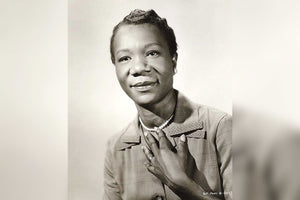Birthday – February 14, 1838
Who is Margaret E. Knight?
She is one of the most productive American inventors who became known for her inventions of machines used for various industrial purposes.
Five Facts about Margaret E. Knight
- Her first invention was when she was 12 years old.
- Her first patented work is a paper bag folding machine which was patented in 1871.
- She was inducted into the Inventors Hall of Fame in 2006.
- She was called the ‘woman Edison’ for having 87 patents to her credit, 27 of which are well-known inventions.
- She invented close to hundreds of machines that are used in different industries today.
Inspirational Quotes from Margaret E. Knight
“I’m only sorry I couldn’t have had as good a chance as a boy.”
Knight’s Biography
Margaret Eloise Knight was born on February 14, 1838 in York Main, United States. She died on October 12, 1914 at the age of 76. When Knight died, she was honored by a local obituary as a ‘woman Edison’. Her parents were Hanna Teal and James Knight. She lived most of her life in Manchester, New Hampshire.
Early Life
When Margaret was a child, she was noticeably different from other young girls because she preferred woodworking tools rather than dolls. She would tinker with a jackknife, gimlet, and pieces of wood instead of playing with other girls. Her interest in machines had led her to her first invention when she was 12 years old.
Her first invention happened when she was visiting her brother who was working in a textile mill. One loom machine malfunctioned, and its shuttle hit a worker. She then fixed the machine by creating a device that prevented the shuttle from falling off. This safety device became a standard fixture on looms and was the first of many technical innovations in the textile mills industry.
Unfortunately, her invention was never patented because of her age. She never finished secondary school because of the lack of financial resources, so she ended up working in a textile mill to help her widowed mother. In her 20s and 30s, she juggled short-term jobs such as home repairs, upholstery, photography, and engraving.
Her life revolved around inventions, creations, and innovations but she failed to profit much from her work. Knight never married and died on October 12, 1914.
Turning Point in Life
Her career as an inventor began when she first invented a paper bag folding machine. In 1867, Knight moved to Springfield Massachusetts and landed a job at the Columbia Paper Bag Company.
There, she noticed that folding paper bag was problematic, so she thought of an easier way to do it. She then came up with the idea of a paper bag folding machine that cuts, glues, and folds to form those flat bottom paper bags which are still widely used today. She made a wooden model of her machine and asked Charles Annan, a machine shop worker, to make a working iron model. Unfortunately, he stole her design and proceeded to patent the device.
After discovering, she immediately filed a lawsuit and successfully regained her idea and got the patent back in 1871. She then went on to establish the Eastern Paper Bag Co. company with a partner. She acquired two more patents later on for the improvements she made in the device that allowed a more efficient operation and mass production of paper bags.
Now, Knight’s machine model is displayed in the Smithsonian’s National Museum of American History. She was inducted into the National Inventors Hall of Fame in 2006. She received a plaque recognizing her as the “first woman awarded a US patent” and holder of “87 US patents”. Her plaque is displayed at the Curry Cottage at 287 Hollis St., in Framingham.
Knight’s Other Inventions
Knight’s paper bag folding machine revolutionized the paper bag industry because it significantly reduced production time and manpower. She continued to think of other inventions that made life and work easier for workers in the industrial field. Her inventions are still used today or have been improved into something more advanced.
Her inventions range from shoe machines to dressmaking machines. Some of her popular patented inventions are the sole cutting machine, dress and skirt shield, a clasp for robes, a spit, a reel, the numbering machine, a window frame with the sash, and a compound rotary engine, among others. All of her inventions are patented between 1902 and 1915.
Legacy
Knight’s legacy to the world of science and technology proved that gender, education, and economic status are not barriers to success. She disproved the myth that the world of machines and technology is for men alone. She is an epitome that inspired other girls who have the knack for tinkering and working with stereotypical jobs for men. Knight’s inventions were one of the most useful in the industry today.
![]() Fast Shipping
Fast Shipping![]() Subscribe to our Newsletter
Subscribe to our Newsletter![]() 🌟 New Global Competition 🌟
🌟 New Global Competition 🌟















